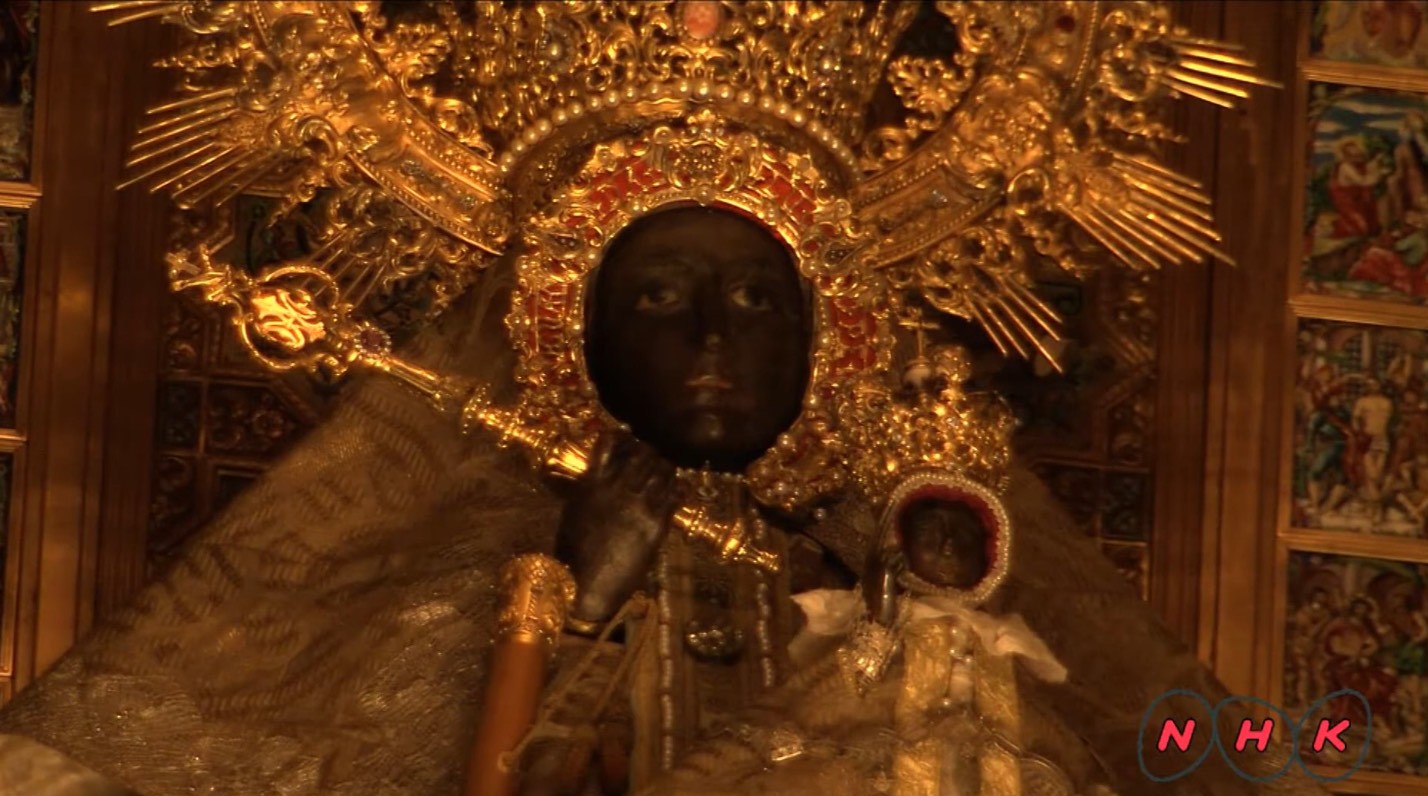The Royal Monastery of Santa María de Guadalupe is a UNESCO World Heritage Site of universal value, located in a valley surrounded by high mountains in the province of Cáceres, Spain. Founded in 1337, the monastery represents a collection of over four centuries of Spanish religious architecture. The town of Guadalupe, which grew up around the monastery, is known for its medieval buildings reflecting traditional architecture.
The monastery is seen as a symbol of two important events in world history that occurred in 1492: the reconquest of the Iberian Peninsula by Catholic kings and the discovery of the Americas by Christopher Columbus.
Architectural Features and Artworks
The monastery is a complex of buildings displaying a blend of different architectural styles, including a Mudéjar church and monastery dating from the 14th and 15th centuries. The Basilica (Templo Mayor), with its façade featuring Mudéjar craftsmanship, has intricately crafted bronze-plated doors, and its interior naves are adorned with vaults, tombs, and altars. It also houses the sacristy, a reliquary built between 1638 and 1647 and renowned for a series of paintings and murals by Zurbarán, highlighting its austere architectural lines.
The square-plan Chapel of Santa Catalina de Alejandria, which connects the sacristy to the Chapel of the Holy Relics, is located within the monastery, with its lantern-lit octagonal dome and 17th-century tombs. Also located behind the basilica's presbytery is the Camarin de la Virgen (Chamber of the Virgin), a small octagonal structure decorated in Baroque style. It features vaults covered with paintings, including nine works by Luca Giordano, and houses a statue of the Virgin of Guadalupe seated on a throne. The monastery was built using bricks in the Mudéjar tradition and painted in white and red.
About the Royal Monastery of Santa Maria de Guadalupe (UNESCO)
Historical and Cultural Role
The historical and cultural role of the Royal Monastery of Santa María de Guadalupe is significant in the development of Spain and the New World. Beyond housing a collection of over four centuries of Spanish religious architecture, the site has served as a symbol of historical events. The monastery particularly symbolizes two landmark events in world history that occurred simultaneously in 1492: the reconquest of the Iberian Peninsula by Catholic kings and the definitive expulsion of the Muslims, and the discovery of the Americas by Christopher Columbus.
The monastery's leading role stems from its relationship with the Crown of Castile and other kingdoms in the Iberian Peninsula, beginning with the reign of Alfonso XI. It served as a center for the processes that led to the unification of all lands, particularly after the conquest of Granada. The statue of the Virgin Mary within the monastery exerted a cultural and religious influence that transcended geographical boundaries; it became a symbol of the Christianization of a large part of the New World. The monastery's influence in this Christianization process continues to grow with the construction of numerous temples, institutions, and dedications in honor of the Virgin of Guadalupe, whose meaning and significance remain alive throughout the discovered lands.
In addition to its religious and political significance, the monastery was also a cultural center for scientific and artistic activities. It was particularly notable as a center for the dissemination of botanical and medical knowledge through the Guadalupe Medical School or School of Surgery, first mentioned in 1451.
The monastery housed workshops where luxury goods and new musical techniques were developed and tested. This cultural and scientific significance is embodied today by the collections displayed in designated museums within the monastery.

Black Madonna (UNESCO)
Protection and Management
The Royal Monastery of Guadalupe is legally protected by the Spanish Historical Heritage Law and the Historical and Cultural Heritage Law of Extremadura. The direct management of the property is the responsibility of the Regional Government of Extremadura, in collaboration with the Franciscan community of Guadalupe. Management is carried out according to a Master Plan developed in 2006, which rationalizes interventions and examines the needs and conditions of the individual buildings.
The monastery has undergone continuous restoration and maintenance since 1908, but the monument itself has remained unchanged. Today, the monastery is inhabited and managed by the Franciscan community. It maintains its functional integrity, welcoming numerous visitors, tourists, and pilgrims throughout the year. Despite constant use, the structure maintains its original form and appearance.


